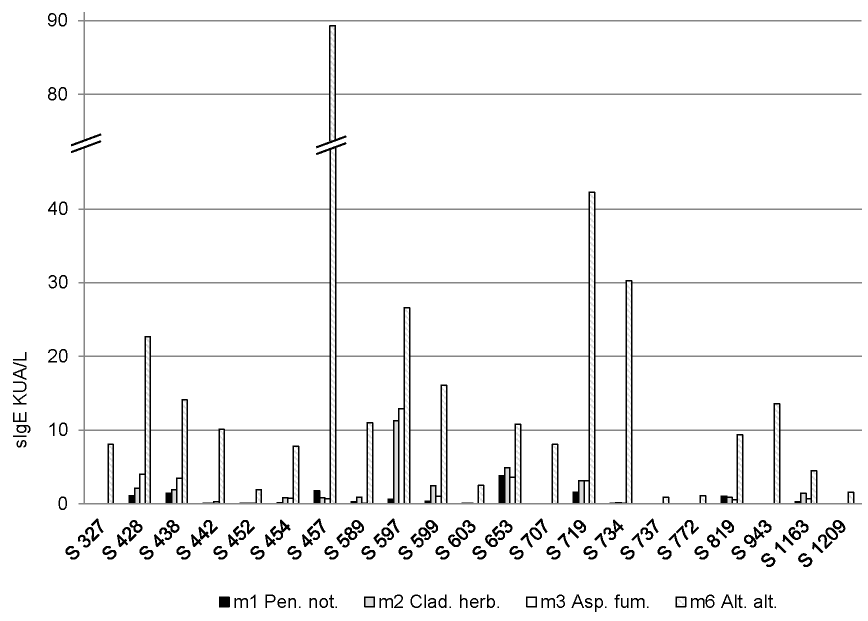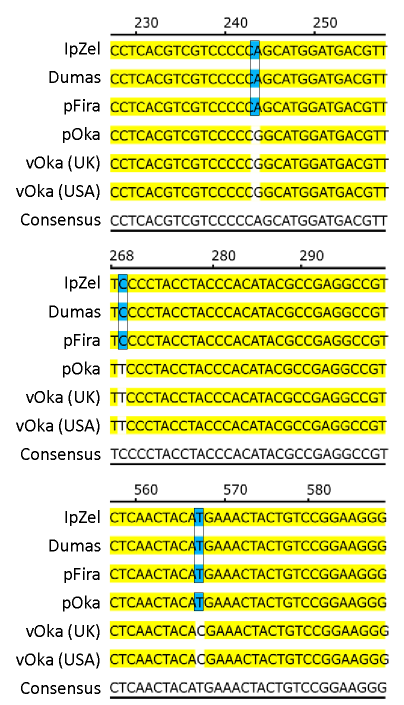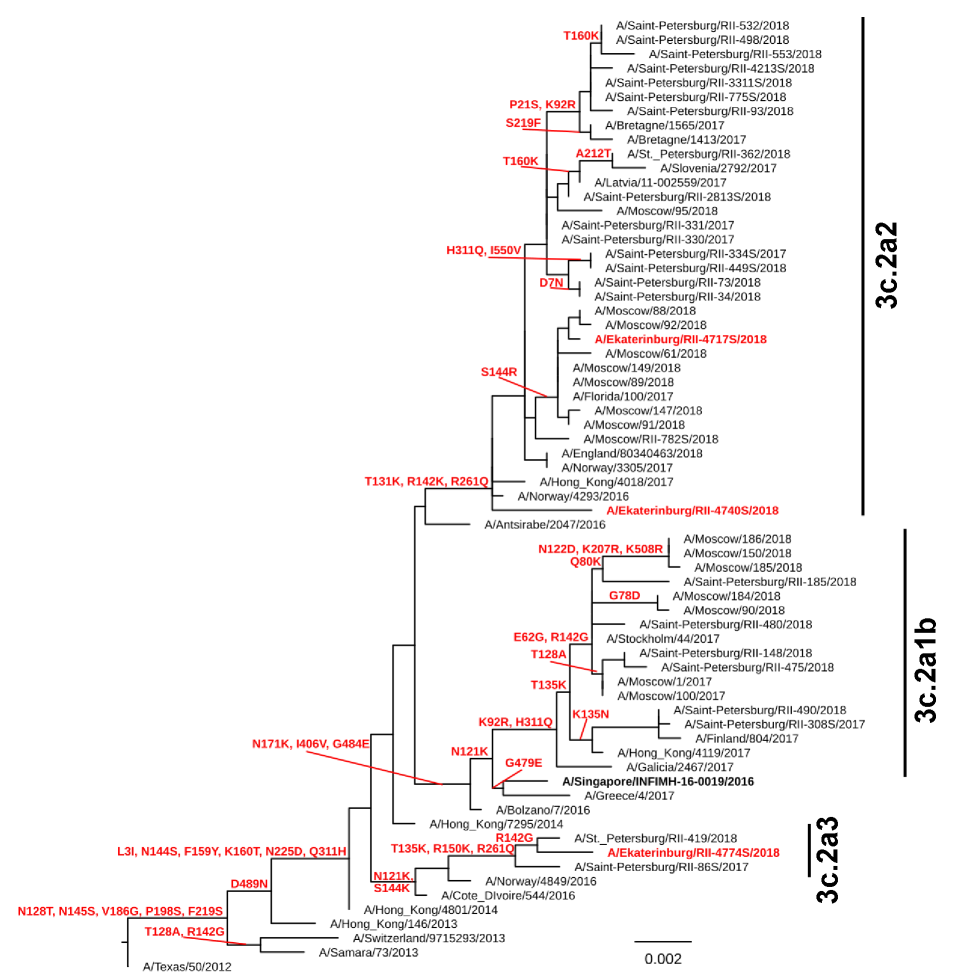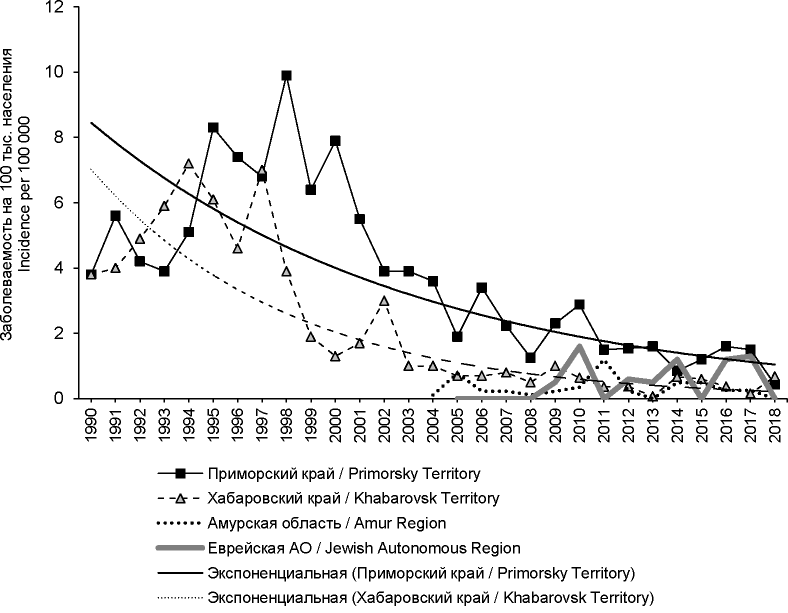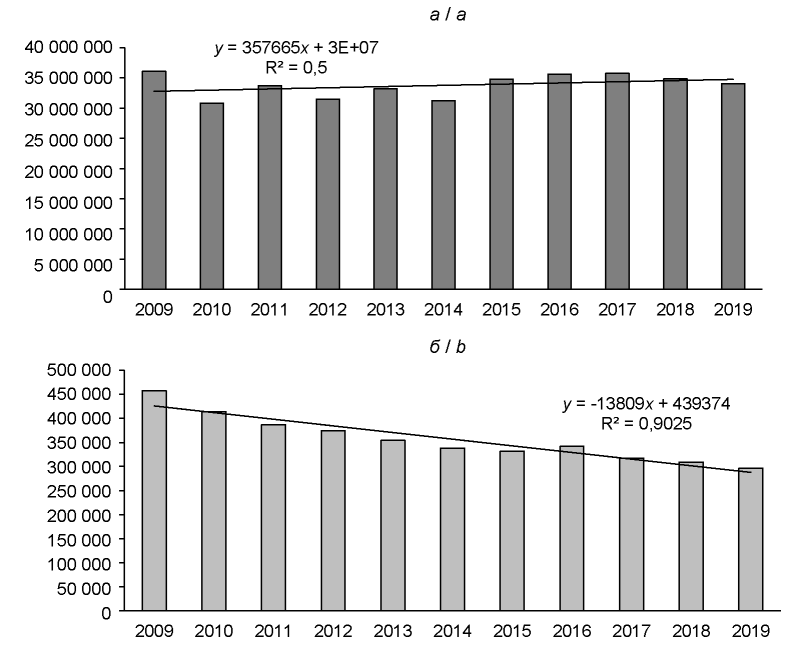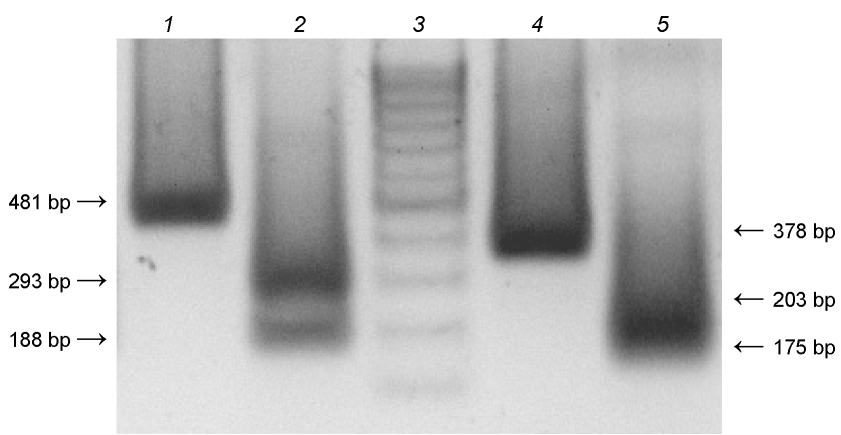Vol 97, No 2 (2020)
- Year: 2020
- Published: 06.05.2020
- Articles: 10
- URL: https://microbiol.crie.ru/jour/issue/view/36
- DOI: https://doi.org/10.36233/0372-9311-2020-97-2
Full Issue
ORIGINAL RESEARCHES
Characterization of Streptococcus pneumoniae strains causing invasive infections using whole-genome sequencing
Abstract
Purpose: antigenic and genetic characterization of Streptococcus pneumoniae strains isolated from patients with invasive forms of pneumococcal infection using whole-genome sequencing.
Materials and Methods. The study was performed on 46 S. pneumoniae strains isolated during the PEHASus multicenter studies in 2015-2018. Sequencing was performed using Illumina protocols and equipment. The SPAdes, SeroBA, PneumoCaT software were used for data processing, as well as BIGSdb software (PubMLST.org).
Results and Discussion. Whole-genome sequences of strains were obtained; the information was entered into the PubMLST database (id: 51080-51125). Ten (21%) strains were found to have serotype 3. Five (11%) strains belonged to serotype 19F and five to serogroup 6; two of them belonged to serotype 6A; one strain had 6B and 1 had 6BE serotype; 1 strain showed discordant result (6A or 6BE). Serotype 15B was identified in 3 (6.5%) strains. Serotypes 7F, 8, 9V, 14, 22F, 23F and 28A were identified in two strains each; serotypes 1, 4, 9N, 10C, 12F, 18C, 35F, 37 and 38 were found once. The proportion of strains with serotypes included in PCV13 and PPV23 vaccines was 65% and 80%, respectively. 36 sequence types were found in strains; out of them, 6 sequence types were found for the first time. A dominant sequence type or clone complexes could not be identified using multilocus sequence typing except for serotype 3 strains. The inability to identify clonal complexes is in congruence with the previously obtained data on the absence of S. pneumoniae clones associated with pneumococcal meningitis in Russia.
Conclusion. The information about serotypes of S. pneumoniae causing invasive infections together with epidemiologic data about strain sources and vaccination allows us to evaluate the effectiveness of pneumococcal vaccines and provide information for improving the PCR-based routine serotyping.
 113-118
113-118


Sensitization to fungal allergens in patients with respiratory allergy – accuracy in diagnostic process
Abstract
Introduction. In Bulgaria, mold allergies are common, and sensitization to different fungal species is found in many patients with atopy.
The objective of this study is to explore sensitization to the most widespread mold species in Bulgaria, and to determine the extent of sensitization to Alt a1, a major allergen of Alternaria alternata, by using component-resolved diagnosis.
Materials and Methods. 21 patients (14 males and 7 females, age range 5-40 years), with respiratory allergy participated in the study. All patients are sensitized to mix of fungal allergens containing: Alternaria alternata, Aspergillus sp., Cladosporium herbarum, Penicillium notatum, proved by in vivo and in vitro methods. All patients underwent the ImmunoCAP test and were assessed for sIgE to individual fungal allergens: m1 Penicillium notatum, m2 Cladosporium herbarum, m3 Aspergillus fumigatus and m6 Alternaria alternata. The component-resolved diagnosis to Alt a1 was performed for 10 patients with increased sIgE to m6 Alternaria alternata.
Results. All studied patients (100%) had elevated sIgE to Alternaria alternata. Eight (38%) patients were sensitized to Penicillium notatum. 11 (52%) and 10 (48%) patients were sensitized to Cladosporium herbarum and to Aspergillus fumigatus, respectively. Ten patients (48%) were monosensitized to Alternaria alternata. Nine (90%) patients with sensitization to Alternaria alternata demonstrated elevated levels of IgE to Alt a1.
Conclusion. Alternaria alternata most often causes sensitization in patients with respiratory allergy. The component-resolved diagnosis using Alt a1 is a precision marker to prove species-specific sensitization to Alternaria alternata.
 119-124
119-124


Characterization of binding of Varicella zoster virus vaccine strains to preparations of mouse brain membrane receptors
Abstract
Purpose: characterization of vFiraVax (the causative agent of chickenpox - VZV) and vZelVax (the causative agent of shingles - HZ) vaccine strains by their ability to bind to preparations of brain membrane receptors of SPF BALB/c mice.
Materials and Methods. The study was performed on cold-adapted vFiraVax VZV and vZelVax HZ vaccine strains developed by the authors on the basis of the wild-type parental pFira VZV virus (chickenpox causative agent) and the latent parental lpZel HZ virus (shingles causative agent); vOka vaccine strains isolated from vaccines against VZV infection from two manufactures (United Kingdom and USA); the HEL-3 strain of diploid cells from human embryonic lung tissue, the MC 27 strain of diploid cells from human embryonic musculocutaneous tissue, primary and diploid cells from guinea pig fetal fibroblasts. The VZV infectivity was estimated by the limiting dilution method using MC 27 cell cultures or guinea pig fetal fibroblasts. The virus titer was measured by the hemadsorption test performed with suspensions of red blood cells from guinea pig or human type 0 positive blood. Negative staining and electron microscopy were used to study the virus preparation. The immunogenicity of vFiraVax VZV and vZelVax HZ virus strains was compared with the immunogenicity of vOka VZV virus strains from different manufacturers by using a cross-neutralization test with immune sera.
Results. The Russian cold-adapted vFiraVax VZV and vZelVax HZ vaccine strains, the latent parental lpZel HZ virus and the vOka VZV vaccine strain (United Kingdom) did not bind to preparations of brain neuroreceptors of SPF BALB/c mice as distinct from the wild-type parental pFira VZV variant and vOka VZV vaccine strains (USA); the absent neurotropism of Russian vFiraVax VZV and vZelVax HZ vaccine strains is not connected with the decreased immunogenicity in relation to foreign counterparts; the electron microscope study of the vFiraVax VZV virus containing liquid concentrate detected VZV nucleocapsids.
Conclusion. The differences in the VZV ability to bind to preparations of brain membrane receptors of SPF BALB/c mice can be explained by the differences in the technology of vaccine manufacturing, including attenuation techniques, obtaining of the vaccine strain, specific characteristics of the latent parental lpZel HZ virus. The absence of the binding with brain neuroreceptors of SPF mice has been proved for the Russian vFiraVax VZV and vZelVax HZ vaccine strains which was is not connected with a decrease in their immunogenicity. The method of assessment of the binding ability of VZV vaccine strains can be used as a preliminary characteristic of neurotropism for newly created vaccine strains and for vaccine products.
 125-133
125-133


Сell-free pertussis vaccine from antigens of freshly isolated strain of B. pertussis serotype 1.2.3
Abstract
Aim. Development of technology for the manufacture of cell-free pertussis vaccine (CPV) from a freshly isolated strain of B. pertussis No. 211 serotype 1.2.3 and the study of its protective activity and safety in comparison with the preparation of vaccine strains. Materials and methods. Following B. pertussis strains were used: freshly isolated strain No. 211, serotype 1.2.3; vaccine strains No. 305, serotype 1.2.0, and No. 475a, serotype 1.2.3. According to the original method, a CPV was obtained from the supernatant of the liquid culture medium of B. pertussis strain No. 211 and its protective and toxic properties were studied. Results. Studies have shown that the use of enriched nutrient media for the cultivation of the strain and the increase in the duration of the the detoxification period of the protective antigen complex isolated from the culture medium are needed to obtain a CPV vaccine consisting of antigens of a freshly isolated strain. CPV obtained from the freshly isolated strain had protectivity 1.7 times higher compared to those of CPV obtained from vaccine strains, was nontoxic and had a low sensitizing properties. The results indicate that the freshly isolated strain No. 211 is a promising candidate for use in the development of pertussis vaccines.
 134-139
134-139


The role of influenza viruses in the development of severe acute respiratory infection in patients admitted to Yekaterinburg hospitals during 2017–2018 epidemic season
Abstract
Objective. To study the role of influenza viruses in the development of severe acute respiratory infections (SARI) in patients admitted to Yekaterinburg hospitals during 2017-2018 epidemic season.
Materials and Methods. A retrospective epidemiological analysis of influenza incidence in Yekaterinburg was conducted, 403 influenza and acute respiratory viral infections case sheets were studied, and PCR analysis of clinical samples from the patients for respiratory viral infections was performed.
Results. During the epidemic period a total 27.0% of the Yekaterinburg population were reported with influenza and other SARI, with 1.8% patients hospitalized. 5.6% of the total number of patients admitted with influenza and SARI in Yekaterinburg hospitals were included in the study. The rate of the detection of influenza A and B viruses RNA in the clinical samples from the patients with SARI was 28.3%. The rates of the detection in PCR of influenza B/Yamagata, A(H1N1)pdm09 and A(H3N2) were 46.5, 20.2 and 10.5%, respectively.
Conclusion. The study results indicated that influenza viruses remain significant pathogens of respiratory infections that required hospitalization. Among patients with SARI the highest incidence was observed in children of a younger age group and was mainly associated with influenza B virus of Yamagata lineage and influenza A virus (H1N1)pdm09. According to the results of a molecular genetic study, influenza A (H1N1) pdm09 viruses belonged to clade 6B.1, carried characteristic amino acid substitutions in hemagglutinin S84N, S162N (with the acquisition of a potential glycosylation site) and I216T and were similar to the A/Michigan/45/2015 vaccine strain. The influenza B viruses studied belonged to the Yamagata lineage, clade 3. The influenza B/Ekaterinburg /RII-4723S/2018 virus differed from the reference strain B/Phuket/3073/2013 by two amino acid substitutions in the hemagglutinin gene M251V and L172Q.
 140-149
140-149


REVIEWS
Tick-borne encephalitis in the Far East focal region of the Eurasian continent
Abstract
The analysis of the activity of natural foci of tick-borne encephalitis (TBE) in the Far Eastern Federal District (Primorsky and Khabarovsk Territories, the Jewish Autonomous and Amur Regions), represented by a single Sikhote-Alin focal region was performed. Endemic territories of China, Korea, Japan are adjacent to this focal region. In the last decade the decrease of the infection rate in ixodid ticks and the morbidity of TBE compared to the 1990s was observed. Data on the infection rates in ixodid ticks based on ELISA, PCR and TBEV isolation are often discrepant. Active circulation of TBEV that involved dominant and less significant species of ixodid ticks and mouse-like rodents has been demonstrated since 1952 in China, since the 1990s in Japan and since 2011 in South Korea. The circulation of TBEV strains of the Far Eastern subtype was determined in all these territories. The exception was 7 strains isolated in South Korea, which appeared to be the European subtype based on the results of molecular genetic analysis. Two new strains of TBEV from the organs of wild rodents Marmota himalayana were isolated in 2017 in the territories of previously unknown natural foci in the Tien Shan, China. The genetic divergence of these strains from three TBEV subtypes allowed us to establish the existance of a new Himalayan TBEV subtype (Him-TBEV), which, according to the authors, has been "hidden" for hundreds of years. One can also speculate the processes of emergence of new TBEV subtypes The most complete picture of the Far Eastern population of TBEV was obtained in the last decade of the twentieth century, which served as the basis and impetus for the study and comparative analysis of the differences in numerous strains of TBEV isolated on the territory of the Eurasian continent.
 150-158
150-158


In vitro models for the study of Zika virus
Abstract
Due to the globalization, increased trade and migration flows the probability of outbreaks of Zika fever is significantly increasing worldwide, including Black sea coast of the Caucasus in the Russian Federation. Zika fever tends to spread rapidly and to expand its geography, so the study of this virus remains an urgent task. The accumulated knowledge recently has contributed to a comprehensive study of Zika virus, but so far many questions of etiology, epidemiology, clinic, specific diagnosis and prevention remain unresolved. This review is based mainly on publications by foreign authors and leading international organizations dedicated to the study of Zika virus in the cell lines of various sources . The review summarizes recent experimental data on the use of cell lines as target cells for the study of Zika virus, their advantages and disadvantages, and the susceptibility of different cell lines to this virus. Information from bibliographic and abstract scientific databases, search websites, and publishers: RSCI, Web of Science, Scopus, MEDLINE, Google Scholar, PubMed, Springer Nature, Elsevier, and others was used in the preparation of the review.
 159-164
159-164


Ecological features of the persistence of Vibrio cholerae: retrospective analysis and actual state of the problem
Abstract
The review presents retrospective data on six cholera pandemics and current views on the causative agent of the seventh pandemic V. cholerae El Tor, which caused a pandemic infection with the formation of true persistent and temporary intermediate endemic foci that provide the longest pathogen circulation in the history of the disease. One of the possible explanations for such a long course of the cholera pandemic is associated with an extremely high variability of the genome and the development of a number of adaptive reactions that allow cholera vibrios to adapt and remain in the environment. Due to the development of molecular genetic research methods, the ability of cholera vibrios to form biofilms which increases stress resistance, the ability to spread by attachment to abiotic (plastic) and biotic substrates (zooplankton and phytoplankton) has been discovered. Biofilm formation is also directly related to overcoming the antagonistic action of members of aquatic ecosystems. Another strategy for the survival of cholera vibrios is the transition to an uncultured state that proves a low level of death in the population. Published data on the possible effects of temperature increasing due to the climate change on cholera outbreaks in Africa (Democratic Republic of the Congo, Nigeria, Angola, Zimbabwe, Sierra Leone), Southeast Asia (Thailand, Malaysia), Central Asia (Pakistan, Afghanistan, Kazakhstan) and South Asia (Nepal) are overviewed. Based on the publications of recent years, an analysis is made of the current state of the studied problem in the Russian Federation and, in particular, in the Rostov region.
 165-173
165-173


DISCUSSIONS
Ranking dynamics of economic burden of infectious diseases as a criterion of effectiveness of epidemiologic control
Abstract
Purpose: rank-based assessment of the economic impact of infectious diseases in the Russian Federation for the further analysis of effectiveness of their prevention and for prioritization of preventive measures.
Materials and Methods. The annual economic burden was eStimated by using inflation-adjusted standard economic costs of one case of infectious disease in the Russian Federation. The data on the number of cases were obtained from the official statistical reports (Forms 1, 2) for 2009-2019. The annual burden of the specific disease was estimated by multiplying the standard cost of 1 case by the number of cases registered within a given year. The economic costs were assessed and ranked.
Results and discussion. In 2019, the greatest economic burden was exerted by acute respiratory infections, tuberculosis, acute gastrointestinal infections, chickenpox, HIV infection (newly diagnosed cases and deaths in 2019). The economic burden of rotavirus infection was assessed and ranked for the first time. The ranking analysis of the economic costs in 2009-2019 showed the largest decrease in the economic burden of influenza, rubella, acute and chronic hepatitis B. At the same time, the economic burden of measles, pertussis, hemorrhagic fevers and tick-borne borreliosis demonstrated an upward trend. The possibility of using ranking dynamics of economic burden as a performance indicator of epidemiological control has been demonstrated. In response to limited public funding of healthcare, the offered method can be used in setting priorities in decision making in the field of epidemic control.
 174-181
174-181


SCIENCE AND PRACTICE
Molecular genetic analysis of the strain Leningrad-16 used for the production of measles vaccine
Abstract
Aim. To study the genetic stability of the measles virus strain Leningrad-16 (L-16) used for the production of vaccine at JSC NPO Mikrogen.
Materials and methods. A series of production and sowing strains of L-16 (JSC NPO Mikrogen), ready-made series of measles vaccines from various manufacturers, and the strain of measles virus genotype D6 were studied. Molecular genetic study of the strains was performed using RT-PCR followed by restriction analysis and sequencing.
Results. The complete genome sequences of the production and sowing strains of L-16 that are used for vaccine production were obtained. The sequence of the vaccine strain was deposited in GenBank. Strain L-16 was confirmed to be genetically stable. The obtained data demonstrated the possibility of using the RT-PCR method with subsequent restriction analysis to confirm the authenticity of the vaccine strain L-16 in finished mono and three component vaccines.
Conclusion. The results of the study suggest the applicability of the molecular genetic methods to confirm the authenticity of the studied strains not only at the production stages, but also in the finished series of vaccines.
 182-189
182-189











